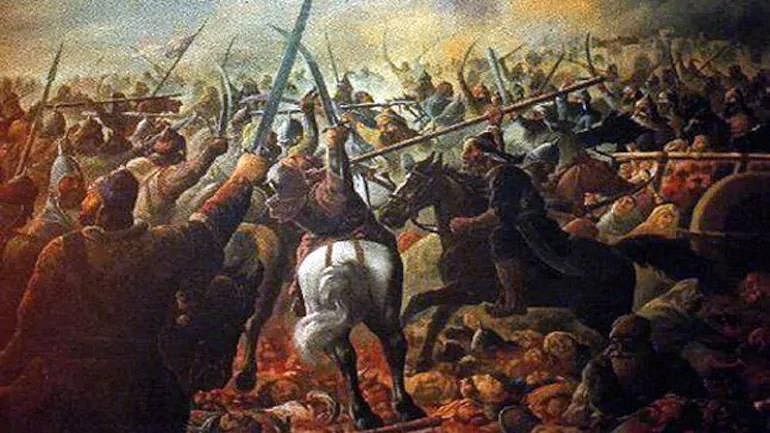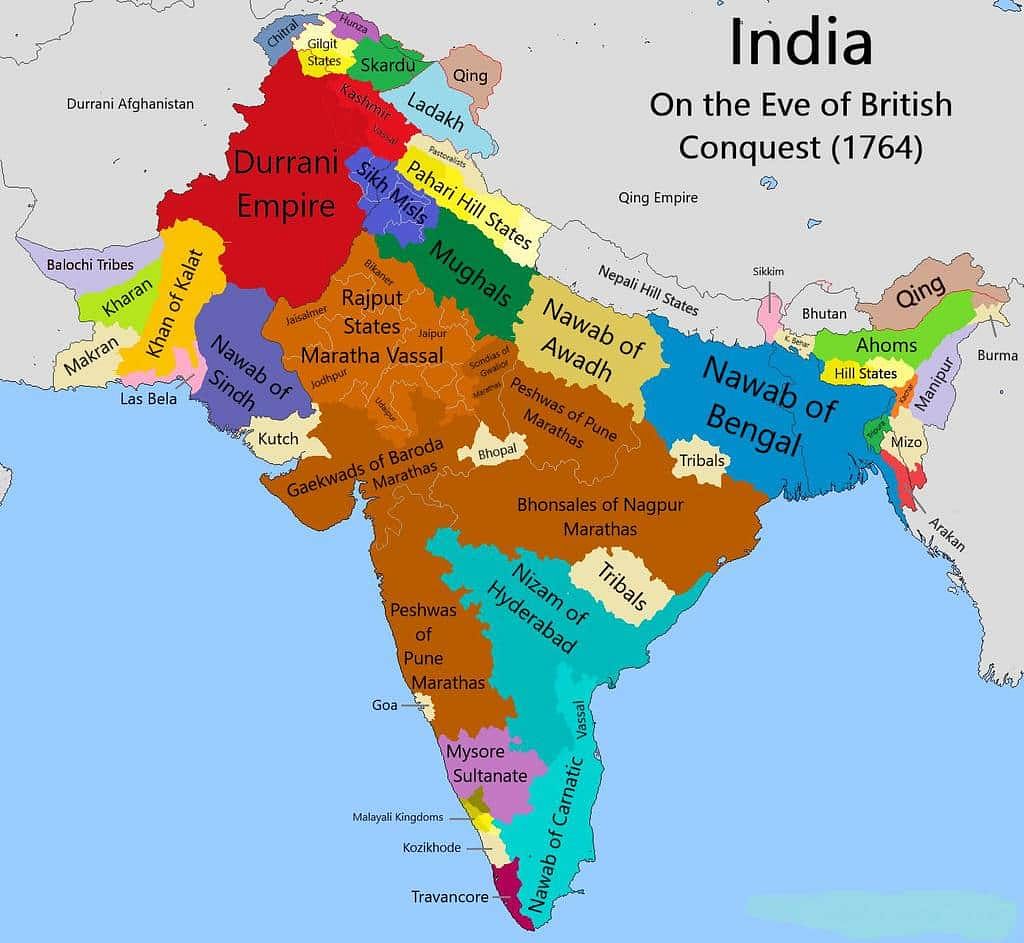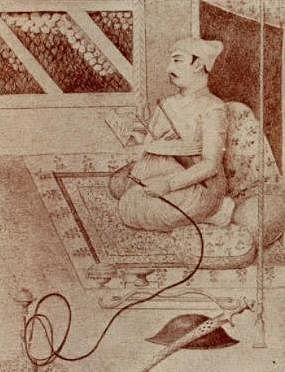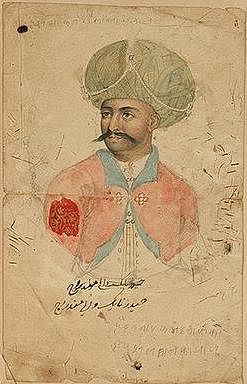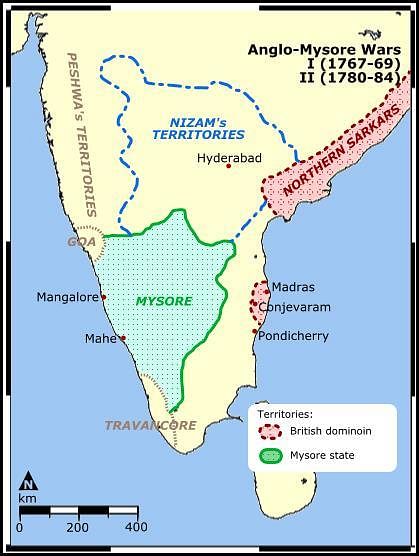Spectrum Summary: Expansion & Consolidation of British Power in India- 1 | History for UPSC CSE PDF Download
| Table of contents |

|
| Introduction |

|
| Causes of British Success in India: |

|
| British Conquest of Bengal: |

|
| Mysore’s Resistance to the Company |

|
Introduction
Do you know the English East India Company was the mere agent of the British Imperialism and not some normal traders? In this EduRev document, you will read about how the company got control over Bengal and other territories till the first war of independence in 1857. How did they succeed in getting control over more regions and weaknesses of those kingdoms? How other kingdoms reacted to the supremacy of the company and how did they respond to it? This EduRev document will provide a brief overview of how the company worked and the policies they implemented to strengthen their power in India.
1. The British Imperial History
The entire imperial history of Britain can be divided into two phases, the 'first empire' stretching across the Atlantic towards America and the West Indies, and the 'second empire' beginning around 1783 (Peace of Paris) and swinging towards East Asia and Africa. Flag of the British Empire
Flag of the British Empire
The imperial history of Britain started with the conquest of Ireland in the sixteenth century. The English then sprang up as the new Romans, charged with civilising so-called backward races throughout the world.
2. Was the British Conquest Accidental or Intentional?
- Our acquisition of India was made blindly. Nothing great that has ever been done by Englishman was done so unintentionally and so accidentally, as the conquest of India. — John Seeley
- School of opinion argues that the British came to trade in India and had no desire to acquire territories or to squander their profits on war waged for territorial expansion.
- The English, it is argued, was unwillingly drawn into the political turmoil created by the Indians themselves, and were almost forced to acquire territories.
- The other group says that the British came to India with the clear intention of establishing a large and powerful empire.
- A desire for quick profits, personal ambitions of individuals, plain avarice and effects of political developments in Europe were some of the factors.
- B. L. Grover writes: "Lord Wellesley resorted to aggressive application of the subsidiary alliance system to extend British dominion in India as a defensive countermeasure against the imperialistic designs of France and Russia".
3. When did the British Period Begin in India?
- Some historians regard the year 1740, when the Anglo-French struggle for supremacy in India began in the wake of the War of Austrian Succession in Europe, as the beginning of the British period.
- Some see the year 1757, when the British defeated the Nawab of Bengal at Plassey, as the designated date.
- Others regard 1761, the year of the third Battle of Panipat when the Marathas were defeated by Ahmad Shah Abdali, as the beginning of this phase of Indian history.
 The Third battle of Panipat
The Third battle of Panipat
Causes of British Success in India:
The British were not averse to using unscrupulous tactics to exploit a situation or a regional ruler to get their way.
The causational forces and factors for the success of the British are as follows:
- Superior Arms, Military and Strategy
The firearms used by the English, which included muskets and cannons, were better than the Indian arms both in the speed of firing and in range. - Better Military Discipline and Regular Salary
A regular system of payment of salaries and a strict regime of discipline were how the English Company ensured that the officers and the troops were loyal. - Civil Discipline and Fair Selection System
The Company officers and troops were given charge based on their reliability and skill and not on hereditary or caste and clan ties. - Brilliant Leadership and Support of Second Line Leaders
Clive, Warren Hastings, Elphinstone, Munro, Marquess of Dalhousie, etc., displayed rare qualities of leadership. The English also had the advantage of a long list of secondary leaders like Sir Eyre Coote, Lord Lake and Arthur Wellesley who fought not for the leader but the cause and the glory of their country. - Strong Financial Backup
The income of the Company was adequate to pay its shareholders handsome dividends as also to finance the English wars in India. - Nationalist Pride
The lack of materialistic vision among Indians was also a reason for the success of the English Company.
British Conquest of Bengal:
➢ Bengal on the Eve of British Conquest
- Bengal, the richest province of the Mughal Empire included present-day Bangladesh, and its Nawab had authority over the region constituting present-day states of Bihar and Odisha.

- Exports from Bengal to Europe consisted of raw products such as saltpetre, rice, indigo, pepper, sugar, silk, cotton textiles, handicrafts, etc.
- The Company paid a sum of Rs 3,000 (£ 350) per annum to the Mughal emperor who allowed them to trade freely in Bengal. In contrast, the Company's exports from Bengal were worth more than £ 50,000 per annum. The region of Bengal was fortunate enough to escape these challenges.
- The population of Calcutta rose from 15,000 (in 1706) to 1,00,000 (in 1750) and other cities like Dacca and Murshidabad became highly populous.
- Between 1757 and 1765, the power gradually got transferred from the Nawabs of Bengal to the British.
➢ Alivardi Khan and the English
- In 1741, Alivardi Khan, the Deputy Governor of Bihar, killed the Nawab of Bengal Sarfaraz Khan in a battle and certified his position as the new Subahdar of Bengal.
- He died in April 1756 and was succeeded by his grandson, Siraj-ud-daula.
➢ Challenges Before Siraj-ud-daula
- There was a dominant group in his court comprising Jagat Seth, Omichand, Rai Ballabh, Rai Durlabh and others who were opposed to him. To these internal rivals were added the threat to Siraj's position from the ever-growing commercial activity of the English company.
- Impulsive by nature and lacking experience, Siraj felt insecure, and this prompted him to act in ways which proved counterproductive.
1. The Battle of Plassey
- Black Hole Tragedy Siraj-ud-daulah is believed to have imprisoned 146 English persons who were lodged in a very tiny room due to which 123 of them died of suffocation.
 The Battle of Plassey
The Battle of Plassey - The Battle, the arrival of a strong force under the command of Robert Clive forged a secret alliance with the traitors of the nawab—Mir Jafar, Rai Durlabh, Jagat Seth (an influential banker of Bengal) and Omichand.
- Under the deal, Mir Jafar was to be made the nawab who in turn would reward the Company for its services. So the English victory in the Battle of Plassey (June 23, 1757) was decided before the battle was even fought.
- Siraj-ud-daula was captured and murdered by the order of Mir Jafar’s son, Miran. Mir Jafar became the Nawab of Bengal. He gave large sums of money plus the zamindari of 24 Parganas to the English.
- The Battle of Plassey had political significance for it laid the foundation of the British empire in India, it has been rightly regarded as the starting point of British rule in India.
- The battle established the military supremacy of the English in Bengal.
2. Mir Kasim and the Treaty of 1760
- Mir Kasim, the son-in-law of Mir Jafar, and the Company was signed in 1760.
 Mir Kasim
Mir Kasim - Important features of the treaty were as follows:
(i) Mir Kasim agreed to pay off the outstanding dues to the Company.
(ii) Mir Kasim promised to pay a sum of rupees five lakh towards financing the Company's war efforts in southern India.
(iii) It was agreed that Mir Kasim's enemies were the company's enemies, and his friends, the company’s friends.
(iv) It was agreed that tenants of the nawab’s territory would not be allowed to settle in the lands of the Company, and vice-versa. - A pension of Rs 1,500 per annum was fixed for Mir Jafar. Mir Kasim shifted the capital from Murshidabad to Munger in Bihar. The move was taken to allow a safe distance from the Company at Calcutta.
- His other important steps were reorganising the bureaucracy.
1. Strong financial backup Which of the above causes is/are correct?
2. Better Military and arms
3. Nationalist Pride
3. The Battle of Buxar
 The Battle of Buxar
The Battle of Buxar- By an imperial Farman, the English company had obtained the right to trade in Bengal without paying transit dues or tolls.
- The combined armies of Mir Kasim, the Nawab of Awadh, and Shah Alam II were defeated by the English forces under Major Hector Munro at Buxar on October 22, 1764, in a closely contested battle.
- The victory made the English a great power in northern India and contenders for supremacy over the whole country.
- After the battle, Mir Jafar, who was made Nawab in 1763 agreed to hand over the districts of Midnapore, Burdwan, and Chittagong to the English for the maintenance of their army.
4. The Treaty of Allahabad
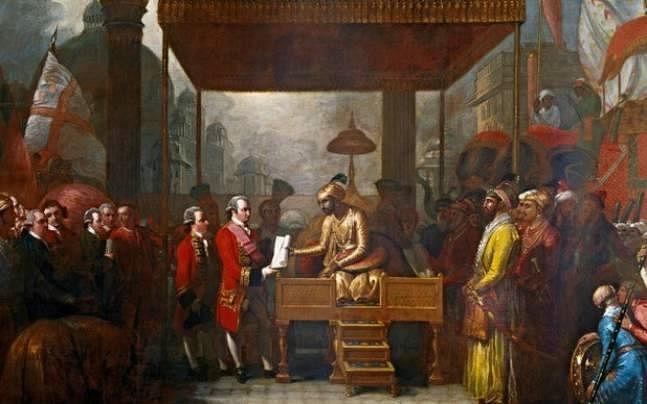 Treaty of Allahabad
Treaty of Allahabad
- Robert Clive concluded two important treaties at Allahabad in August 1765—one with the Nawab of Awadh and the other with the Mughal Emperor, Shah Alam II.
- Nawab Shuja-ud-Daula agreed to:
(i) Surrender Allahabad and Kara to Emperor Shah Alam II.
(ii) Pay Rs. 50 lakh to the Company as war indemnity and
(iii) Give Balwant Singh, Zamindar of Banaras, full possession of his estate. - Shah Alam II agreed to:
(i) Reside at Allahabad, to be ceded to him by the Nawab of Awadh, under the Company’s protection.
(ii) Issue a Farman granting the Diwani of Bengal, Bihar and Orissa to the East India Company instead of an annual payment of Rs. 26 lakh and
(iii) A provision of Rs. 53 lakh to the Company in return for nizamat functions (military defence, police, and administration of justice) of the said provinces.
5. Dual Government in Bengal (1765-72)
- Robert Clive introduced the dual system of government, i.e., the rule of the two—the Company and the Nawab—in Bengal in which both the Diwani, i.e., collecting revenues, and Nizamat, i.e., police and judicial functions, came under the control of the company.
- The Company exercised Diwani rights as the diwan and the Nizamat rights through its right to nominate the deputy subahdar. The Company acquired the Diwani functions from the emperor and Nizamat functions from the subahdar of Bengal.
- The dual system led to an administrative breakdown and proved disastrous for the people of Bengal.
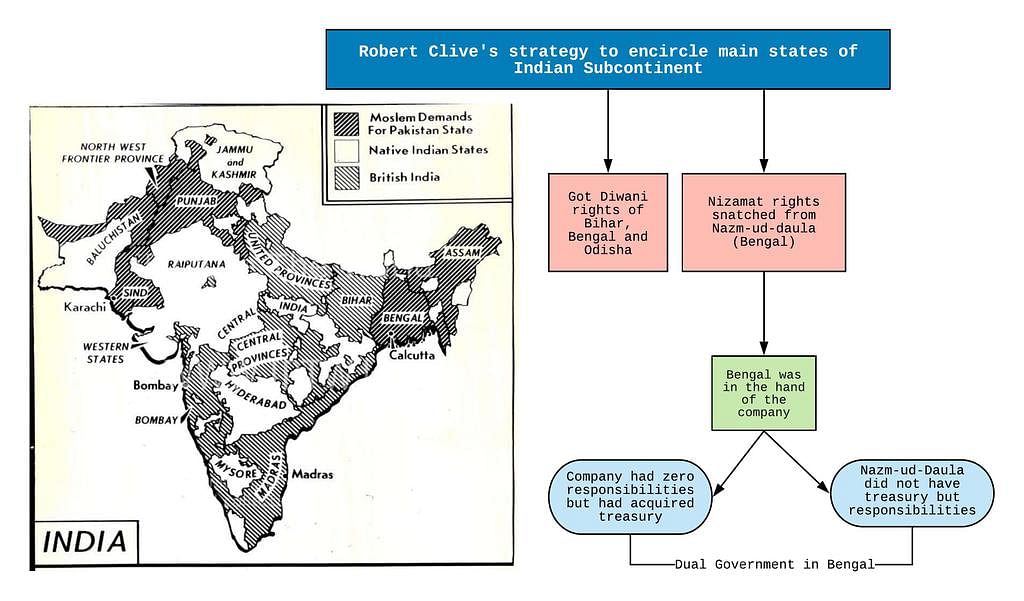 The Dual Government in Bengal
The Dual Government in Bengal
Mysore’s Resistance to the Company
➢ The Wodeyar / Mysore Dynasty
- The battle of Talikota (1565) gave a deadly blow to the great kingdom of Vijayanagara.
- In 1612 a Hindu kingdom under the Wodeyars emerged in the region of Mysore.
- Chikka Krishnaraja Wodeyar II ruled from 1734 to 1766. Mysore emerged as a formidable power under the leadership of Haidar Ali and Tipu Sultan.
➢ Rise of Haidar Ali
- Haidar Ali became the de facto ruler of Mysore in 1761. He realized that the French-trained Nizami army could be silenced only by effective artillery.
 Haider Ali
Haider Ali - Haidar Ali took the help of the French to set up an arms factory at Dindigul (now in Tamil Nadu), and also introduced Western methods of training for his army.
- With his superior military skill he captured Dod Ballapur, Sera, Bidnur and Hoskote in 1761- 63, and brought to submission the troublesome Poligars of South India (in what is now Tamil Nadu).
- Recovering from their defeat at Panipat, the Marathas under Madhavrao attacked Mysore and defeated Haidar Ali in 1764, 1766, and 1771. And recovered all the territories during 1774-76.
➢ First Anglo-Mysore War (1767-69)
- The Nizam, the Marathas, and the English allied together against Haidar Ali.
- English conclude a treaty with Haidar on April 4, 1769— Treaty of Madras.
- The treaty provided for the exchange of prisoners and mutual restitution of conquests.
- Haidar Ali was promised the help of the English in case he was attacked by any other power.

➢ Second Anglo-Mysore War (1780-84)
- Haidar considered the English attempt to capture Mahe a direct challenge to his authority.
- Haidar forged an anti-English alliance with the Marathas and the Nizam.
He followed it up by an attack in the Carnatic, capturing Arcot, and defeating the English army under Colonel Baillie in 1781. - Haidar faced the English boldly only to suffer a defeat at Porto Novo in November 1781.
- Fed up with an inconclusive war, both sides opted for peace, negotiating the Treaty of Mangalore (March 1784) under which each party gave back the territories it had taken from the other.
- Haidar Ali died of cancer on December 7, 1782.
➢ Third Anglo-Mysore War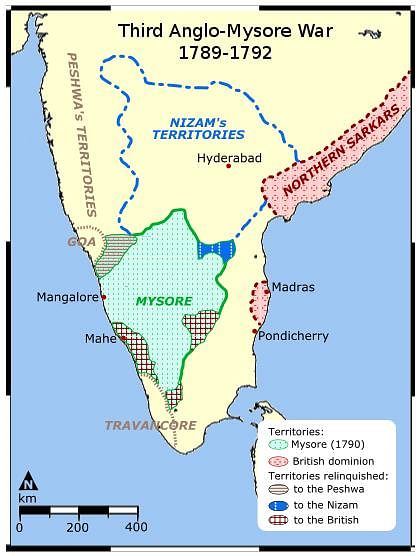
- In April 1790, Tipu declared war against Travancore for the restoration of his rights. In 1790, Tipu defeated the English under General Meadows.
- In 1791, Cornwallis took the leadership and at the head of a large army marched through Ambur and Vellore to Bangalore (captured in March 1791) and from there to Seringapatam.
- Treaty of Seringapatam- Under this treaty of 1792, nearly half of the Mysorean territory was taken over by the victors, Baramahal, Dindigul and Malabar went to the English.
- While the Marathas got the regions surrounding the Tungabhadra and its tributaries and the Nizam acquired the areas from the Krishna to beyond the Pennar. Besides, war damage of three crore rupees was also taken from Tipu.
➢ Fourth Anglo-Mysore War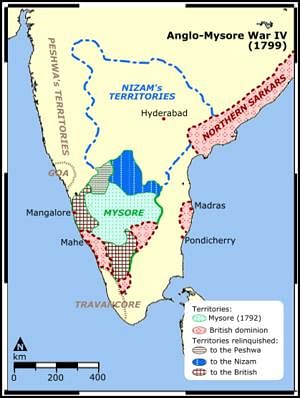
- In 1798, Lord Wellesley succeeded Sir John Shore as the new Governor-General.
- The war began on April 17, 1799, and ended on May 4, 1799, with the fall of Seringapatam.
- Tipu was defeated first by English General Stuart and then by General Harris.
- The English were again helped by the Marathas and the Nizam. The Marathas had been promised half of the territory of Tipu and the Nizam had already signed the Subsidiary Alliance.
➢ Mysore After Tipu
- Wellesley offered Soonda and Harponelly districts of Mysore Kingdom to the Marathas, which the latter refused.
- The Nizam was given the districts of Gooty and Gurramkonda.
- The English took possession of Kanara, Wynad, Coimbatore, Dwaraporam and Seringapatam.
- The new state of Mysore was handed over to the old Hindu dynasty (Wodeyars) under a minor ruler Krishnaraja III, who accepted the subsidiary alliance.
- In 1831 William Bentinck took control of Mysore on grounds of misgovernance.
- In 1881 Lord Ripon restored the kingdom to its ruler.
This is the first part of the document, in the next EduRev document you will read about Anglo Marathas, Anglo Sikhs, and other foreign territorial wars of British.
|
112 videos|473 docs|173 tests
|
FAQs on Spectrum Summary: Expansion & Consolidation of British Power in India- 1 - History for UPSC CSE
| 1. What is the expansion of British power in India? |  |
| 2. How did the British consolidate their power in India? |  |
| 3. What was the impact of British rule on India? |  |
| 4. How did Indian society react to British rule? |  |
| 5. What was the role of the British East India Company in the expansion of British power in India? |  |

|
Explore Courses for UPSC exam
|

|
